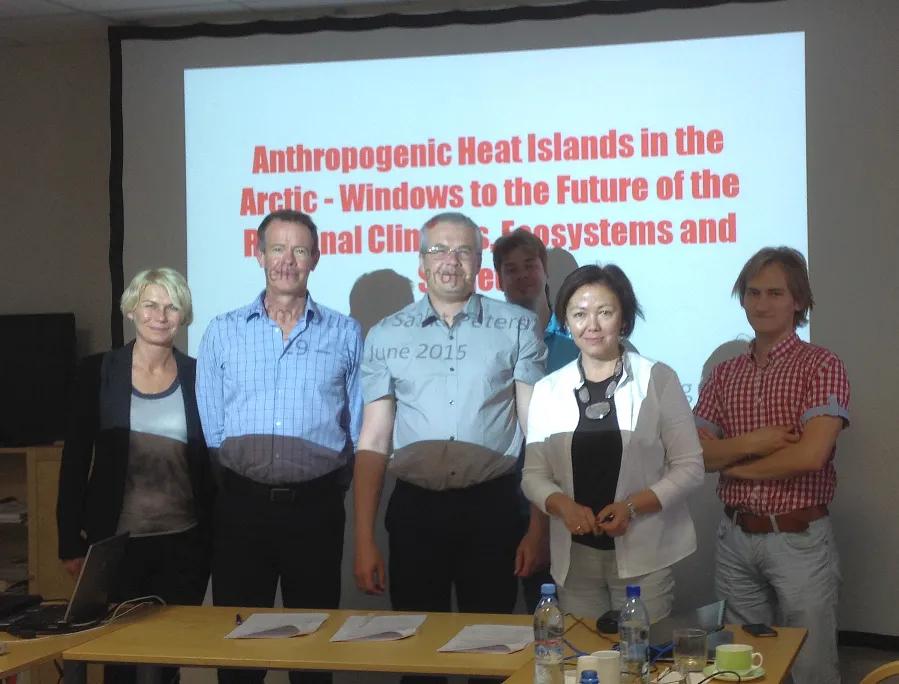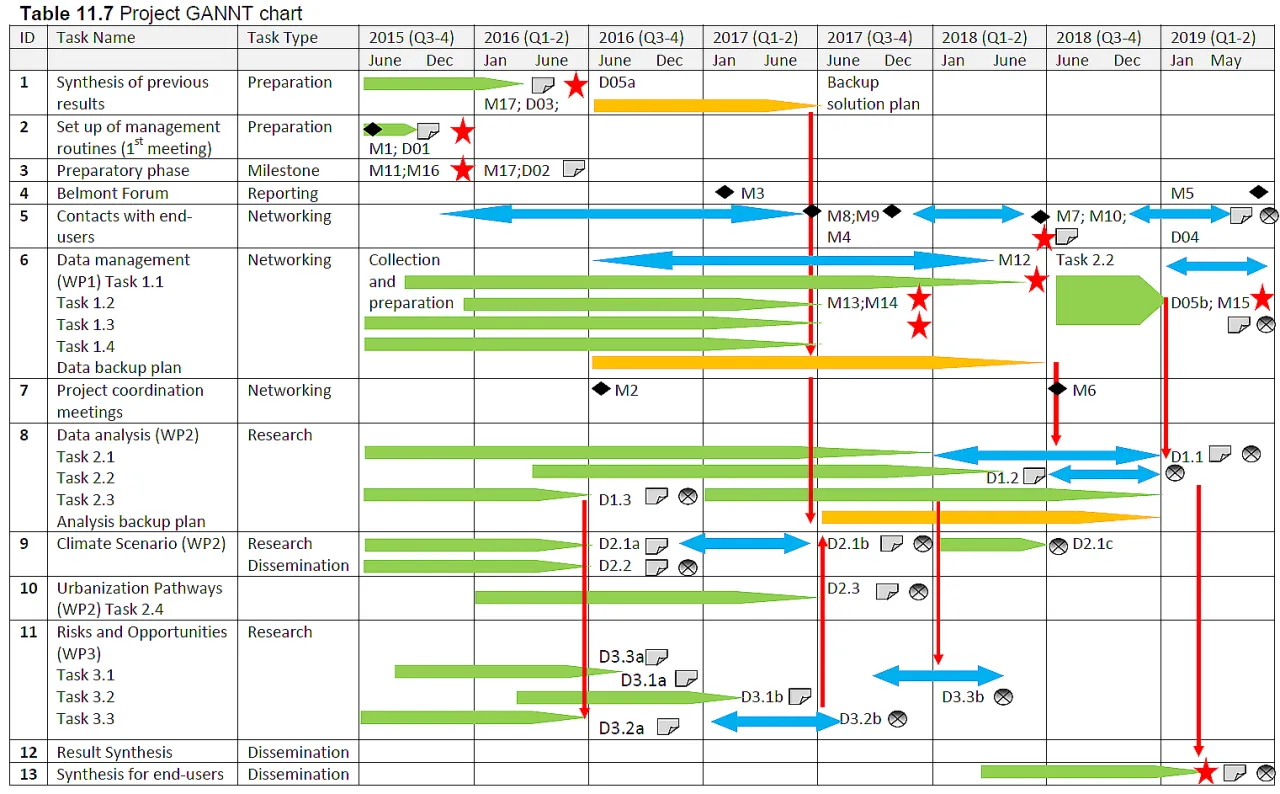Content
Project Work packages and Tasks responsibilities
Project work flow
Project deliverables
Project risk assessement

The ethical code of conduction was approved by the Ethics Committee of the Tyumen Scientific Center SB RAS (Russia) on March, 20, 2015.
Project Work packages and Tasks responsibilities (updated)
WP1 Documenting the climate and social changes (IEC,A. Kurchatova)
1.1 In situ data (IEC, P. Konstantinov, D. Drozdov)
1.2 Satellite imagery and products (NERSC, V. Miles)
1.3 Reanalyses products (IEC, P. Konstantinov)
1.4 Long historical observations & climate reconstructions (INSTAAR, M.Miles)
WP2 Understanding the micro-climate and urban development (NERSC, I. Esau)
2.1 Micro-climate modelling (NERSC, I. Esau; IEC, M. Varentsov; for Apatity)
2.2 Building-up statistical support (INSTAAR, M. Miles)
2.3 Process understanding (IEC, P. Konstantinov)
2.4 Environmental impact of urbanization (GWU, M. Laurelle)
WP3 Communication of risks and opportunities (GWU, M. Laurelle)
3.1 Bio-medical threats (IEC, S. Petrov)
3.2 Urban threats (IEC, P. Konstantinov; NERSC, I. Esau)
3.3 Political threats (GWU, M. Laurelle)
Project work flow

Project deliverables
D0.1 Consortium agreement [confidential] The project consortium agreement was signed on June 30, 2015, by Igor Esau (NERSC, Norway), Martin Miles (INSTAAR, USA) and Anna Kurchatova (IEC, Russia).
D0.2 Internal Risk Assessment [confidential] The internal document on the risk assessement has been agreed on september 30, 2015
D0.3 Literature review [public] The final literature review will be avaialble as the NERSC Technical report #xxx in 2019
D0.4 Executive summary of project findings [public] The final summary will be available as the NERSC Technical report #xxx and published at the web-site in 2019
D0.5 (a) and (b) Summary of data access [public] The summary of the data sets used in the project are described in Data section
D1.1 High-resolution atlas (Environmental and climate impact of boreal cities) [public] The online atlas is presented in Atlas section
D1.2 Future Arctic WP1 GWU Report Public M36
D1.3 Long-term arctic climate variability WP1 INSTAAR Report; Publication Public M24
D2.1 (a-c) Climate scenario downscaling WP2 IEC Publication Project end-users M36
D2.2 Climate change indicators [cancelled because of the funding cut by RFBR, Russia] WP2 IEC Report Public M24
D2.3 Urbanization pathways WP2 GWU Report Public M24
D3.1 (a-b) Adaptation assessment [public] The work in progress. WP3 IEC Publication Public M24
D3.2 (a-b) Arctic actors’ agenda WP3 GWU Publication Public M24
D3.3 (a-b) Human health adaptive capacity [public] The project report is presented in Results section.
Project risk assessment
[1] Challenges involved in inter- and trans-disciplinary collaboration
There were certain language and data set transfer problems in the project. Significant materials from the Russian partners came in Russian language. There were no capacity to translate the technical material beyond the part included in international peer-review publications. There were no capacity to describe and organized the data sets collected by some Russian participats. We decided to provide access to the material in Russian language on the project web site.
[2] Challenges due to shorter period of funding for the Russian group
The Russian part of the project was serioesly underfunded post factum. the cut was more than 30% of the total contracted amount. In addition, the finance depertment of the Russian partner incorrectly counted the project expenses, specifically the taxable part. It further reduced the actually available funding. We had to reconsider the field programme, using the available funding to the work supported by other projects. In result, (a) the in situ urban observations were enhances; (b) the field study of soil and permafrost processes was completed fully; (c) the study of social and human health issues was restricted to the data in hands.
Additional funding in TRAKT-2018 project helped to extend the Russian project by 10 months.
[3] Issues with data collection and storage
No such issues appeared in the project
[4] Data availability and lack of process understanding for proxy and indicator developments
No such issues appeared in the project
[5] Challenges in modelling scenarios and society responses
WP2, WP3 Adapt existing scenarios from other geographical locations; use statistically-based extrapolation; adopt data from model intercomparison projects
To be assessed
[6] Changes in personnel and organizational changes
No such issues appeared in the project
[7] Obstacles due to international political risks
No such issues appeared in the project